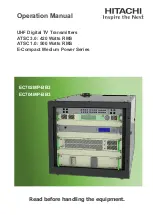
SECTION ONE
GENERAL INFORMATION
The unit utilises passive infrared technology to detect heat radiation of moving human bodies.
This transmitter must be used in conjunction with suitable receivers in the IQ Wirefree range.
Upon detection, the transmitter will send a signal to its intended receiver (bought separately) and
the receiver will react as programmed. An integral daylight sensor ensures night-only operation of
the floodlight.
PLEASE NOTE:- PLEASE SEE THE SEPERATE INSTRUCTION MANUALS FOR THE
RECEIVER PRODUCTS TO UNDERSTAND HOW TO PROGRAM AND ADJUST THAT
SPECIFIC RECEIVER.
THIS MANUAL COVERS THE INSTALLATION OF THIS SPECIFIC PIR TRANSMITTER ONLY
PARTS INCLUDED
- Luminaire c/w PIR Sensor unit.
- Instruction manual. Please keep safe for future reference.
- Accessory Pack.
- Tungsten halogen bulb
TOOLS & PARTS NEEDED
- Electric/hand-held drill & bits.
- Terminal or Electricians screwdriver
- Large slotted/philips screwdriver
- Wire cutters
The Floodlight transmitter is for outdoor use only. Unit must be mounted on a non-flammable
surface as a fixed luminaire, and is not suitable for portable use.
The unit can get very hot during use. Ensure the unit has cooled before handling.
Ensure adequate ventilation space is allowed between the unit and any object above, in front or
to either side of the unit. Suggested space is 0.5m above, 0.3m to either side & 1.0m in front.
If in any doubt, consult a qualified tradesperson or electrician.
SECTION TWO
FLOODLIGHT TRANSMITTER:-SELECTING THE LOCATION
For optimum performance, mount at 2.5m (8ft) high. The sensor can be pointed in any direction
as long as it is within 100m of the receivers it is to be used with. The sensor can detect motion
up to 12m within a 180 degree radius.
Avoid areas where pets or traffic may trigger the sensor. Avoid mounting where the
Sensor aims at objects that change temperature rapidly, such as central heating vents, air
conditioners or waving branches. Avoid reflective surfaces like conservatories or pools of
water.
Avoid any metal obstructions (support beams, chain link fences etc) that could block the
path of radio signal transmission between Sensor and Receiver
The sensor moves up or down, left or right to change the coverage area.
Keep in mind the sensor is most sensitive to movement across its field of vision.
The motion detector has a number of detection zones, at various vertical and horizontal angles
as shown (see diagram A). A moving human body needs to cross/enter one of these zones to
activate the sensor. The best all-round coverage is achieved with the unit mounted at the
optimum height of 2.5m. Careful positioning of the sensor will be required to ensure optimum
performance. See diagram A detailing detection range and direction.
The sensor is more sensitive to movement ACROSS its field of vision than to movement directly
TOWARDS (see diagram B). Therefore position the unit so that the sensor looks ACROSS the
likely approach path.
Avoid positioning the sensor where there are any sources of heat in the detection area (extractor
fans, tumble dryer exhausts etc.).
SF-PTV180-500-T.qxd 13/04/2005 13:51 Page 3





























